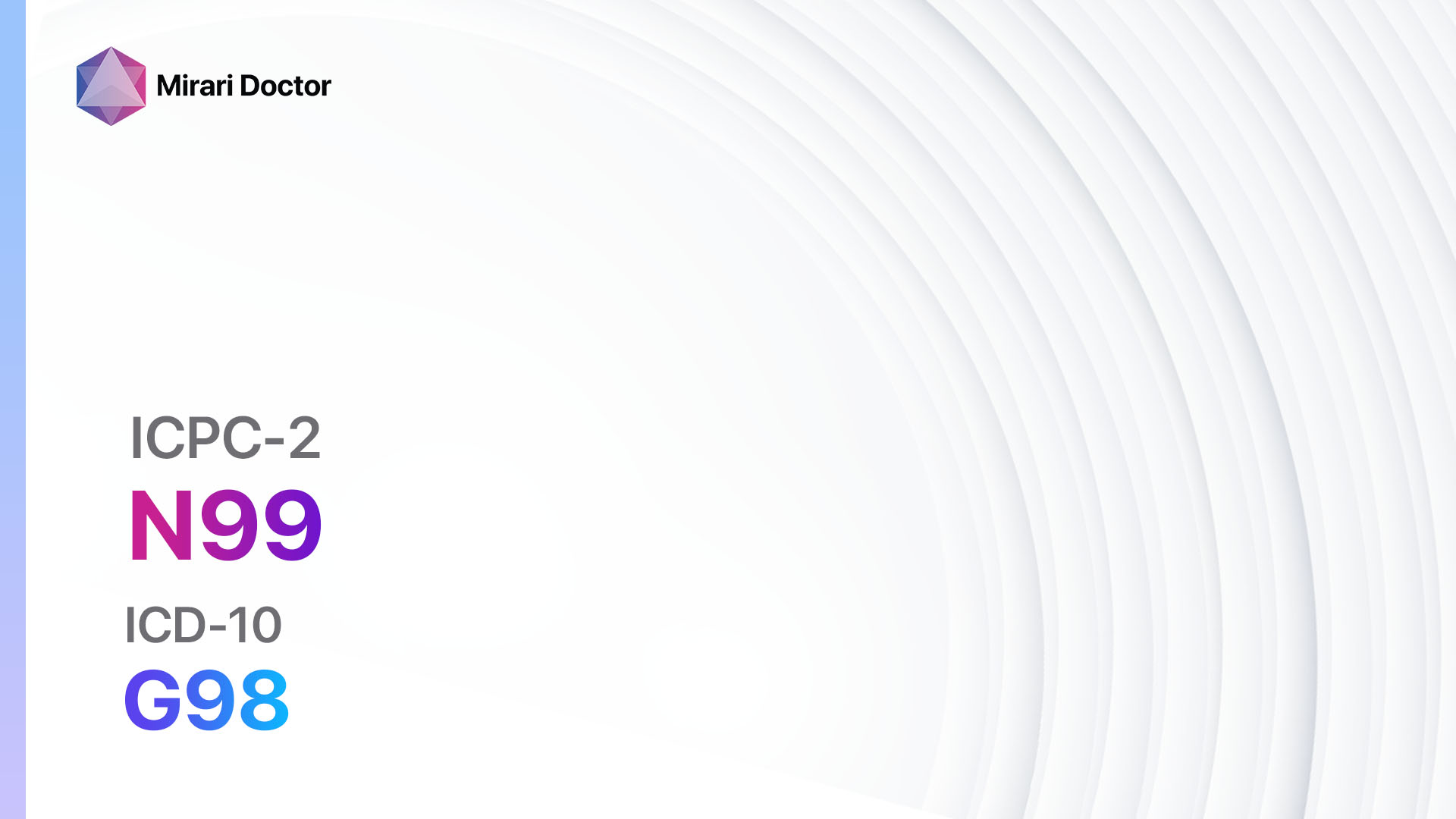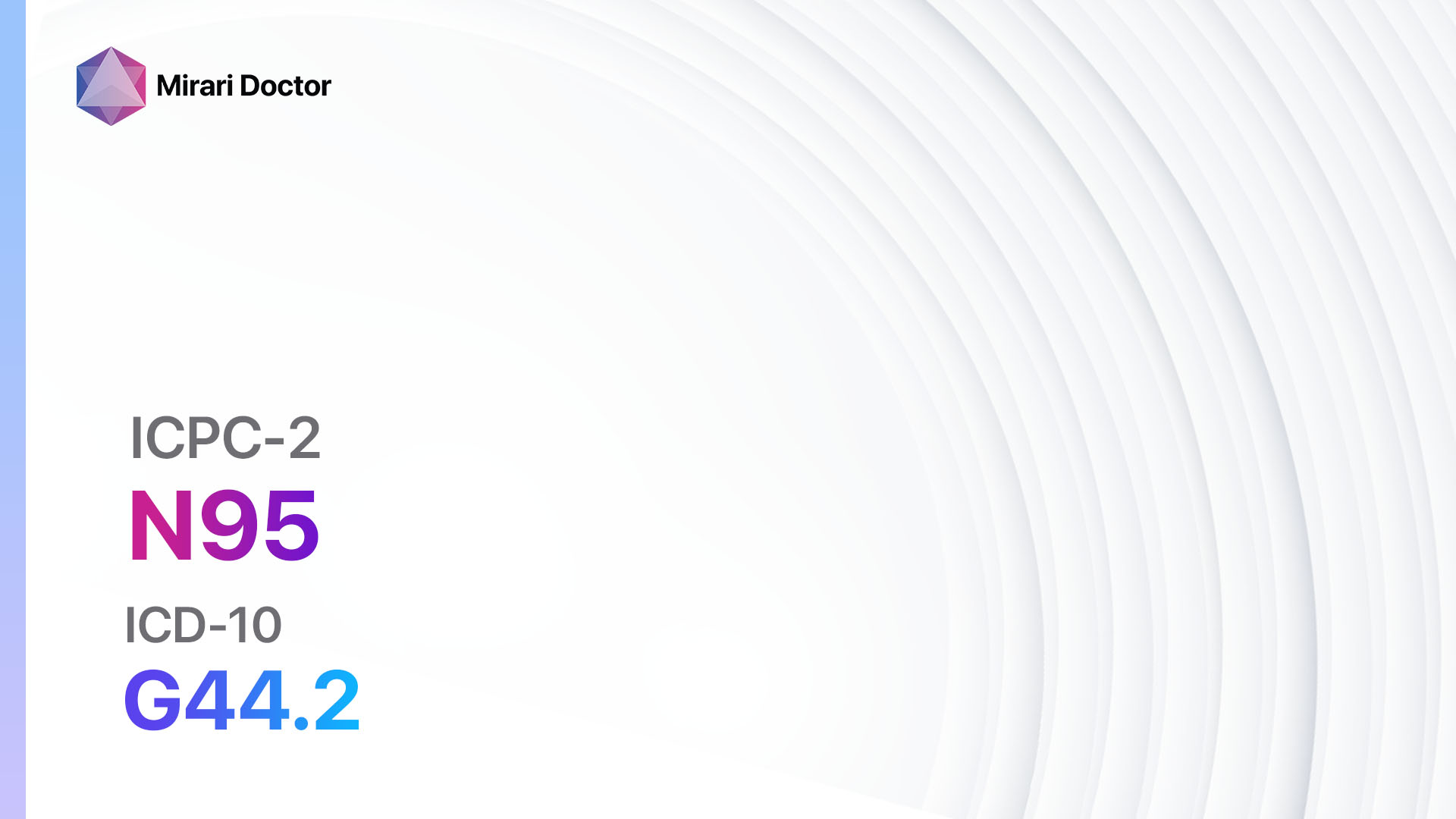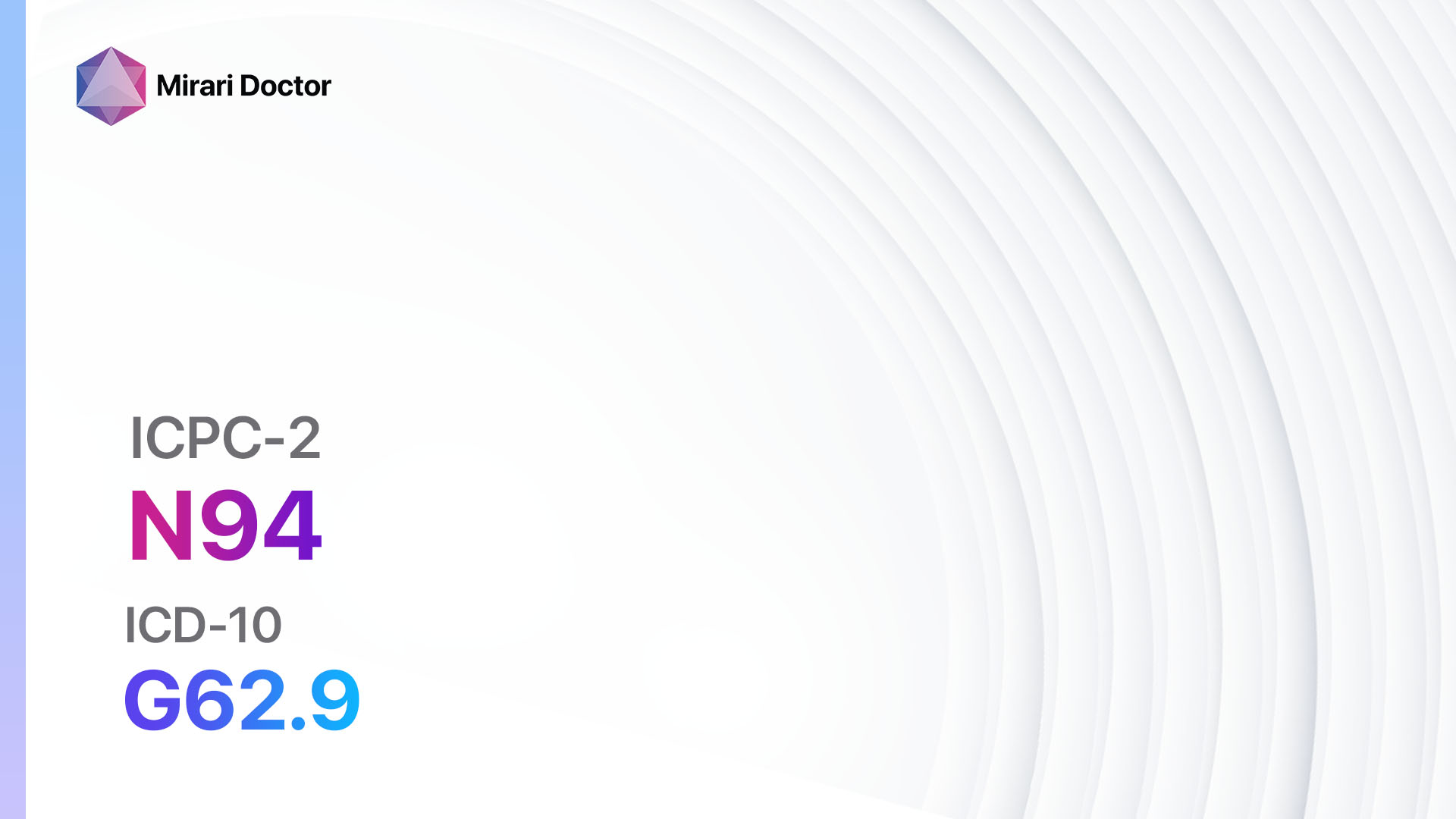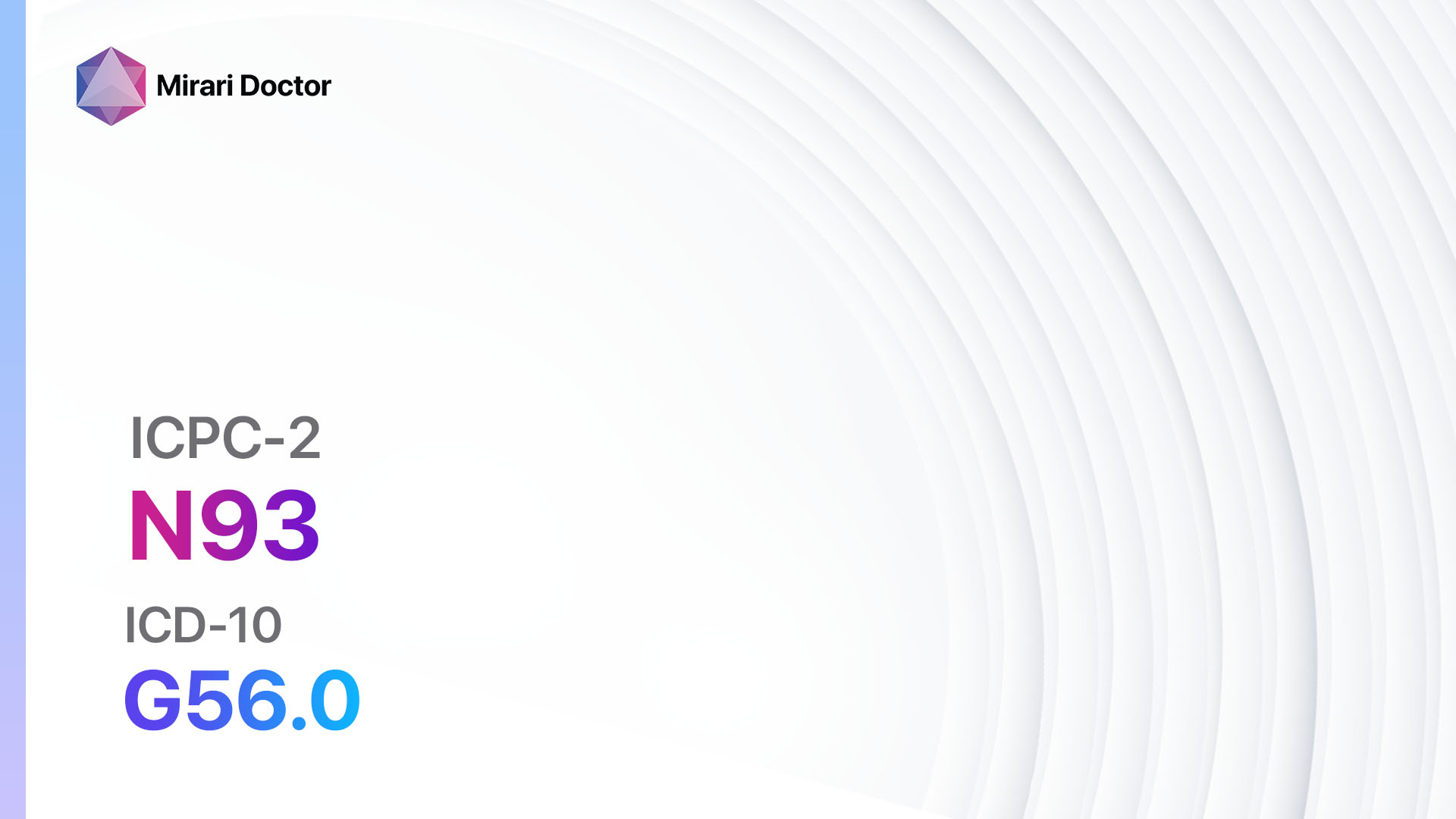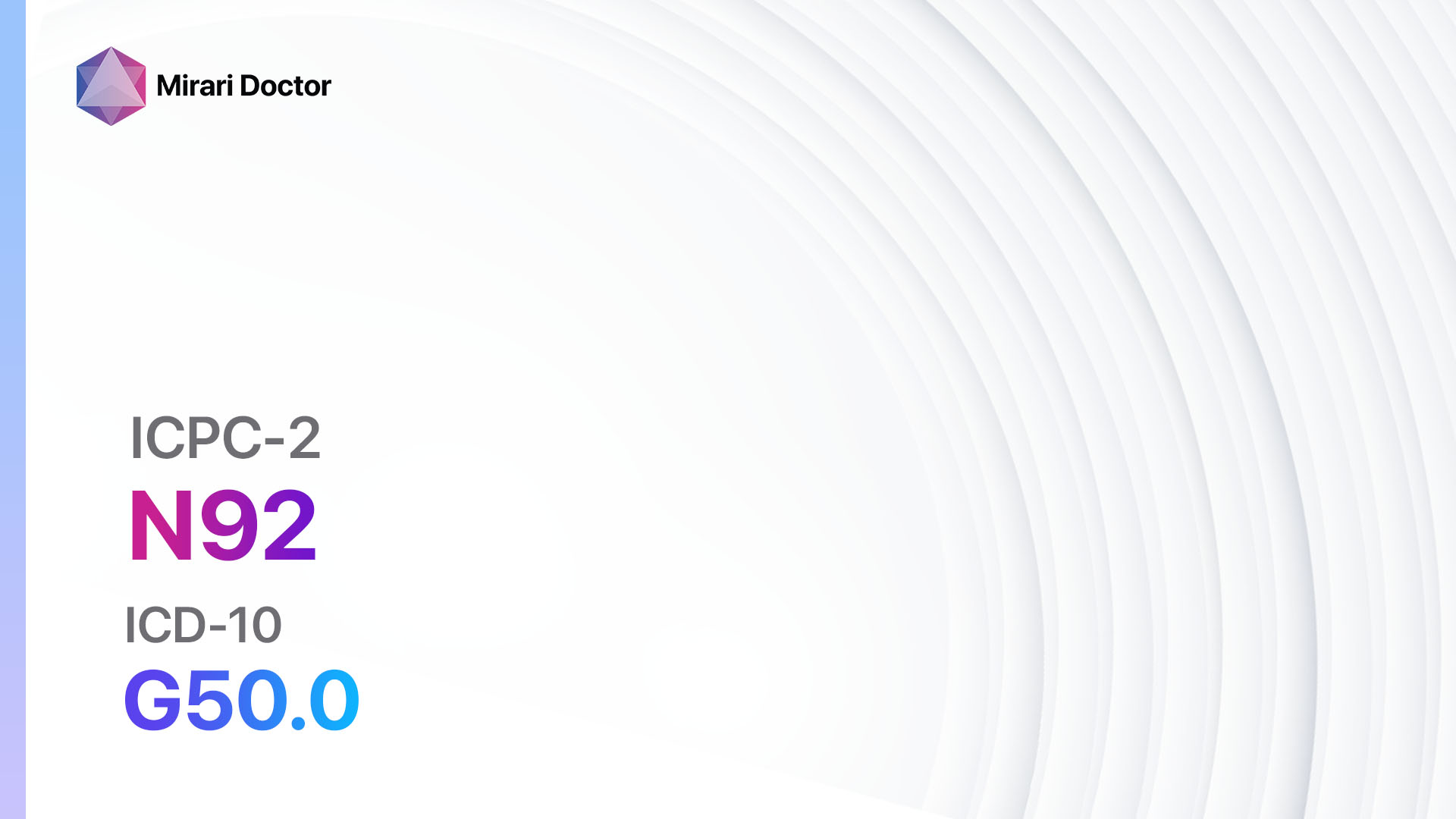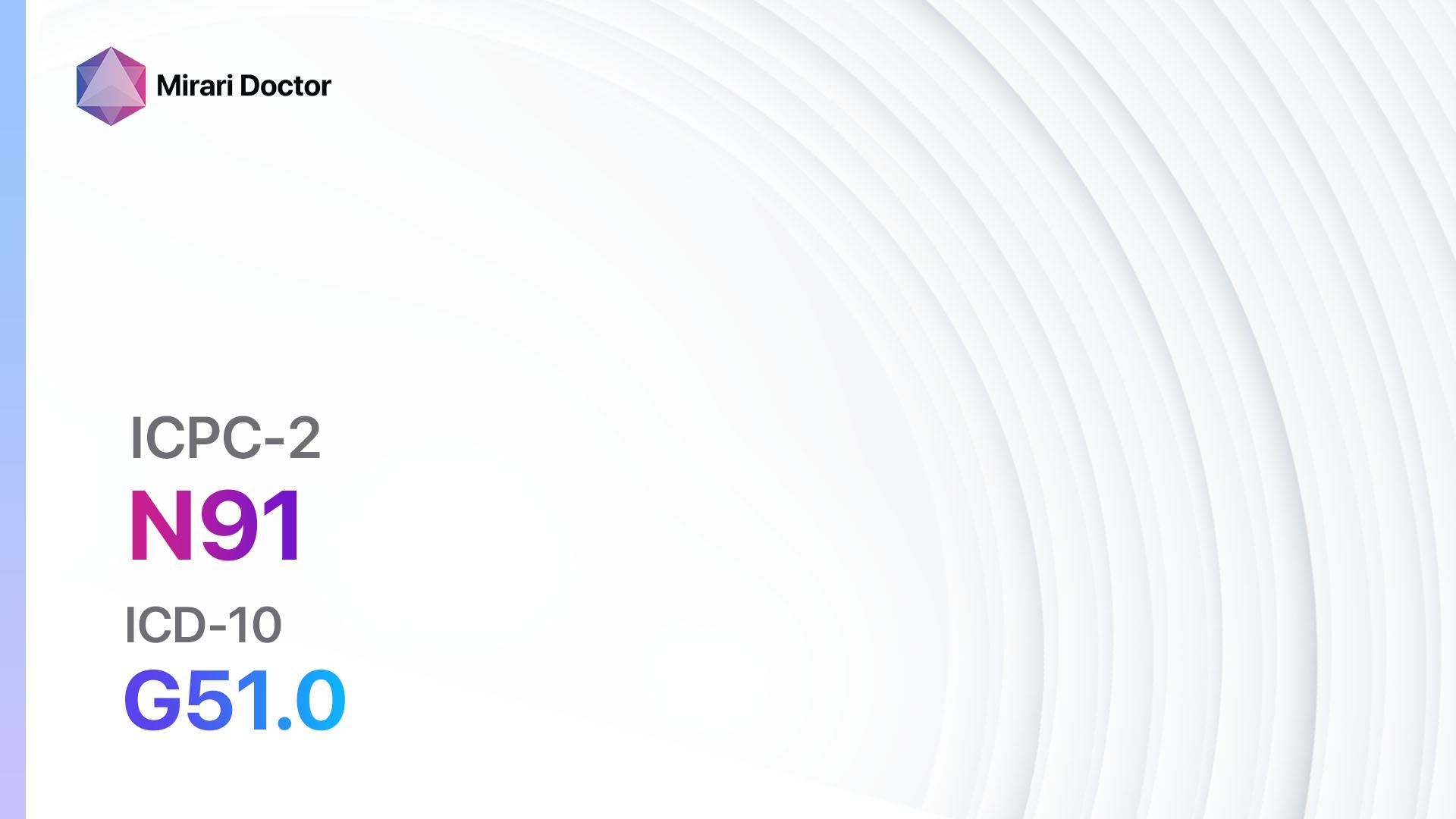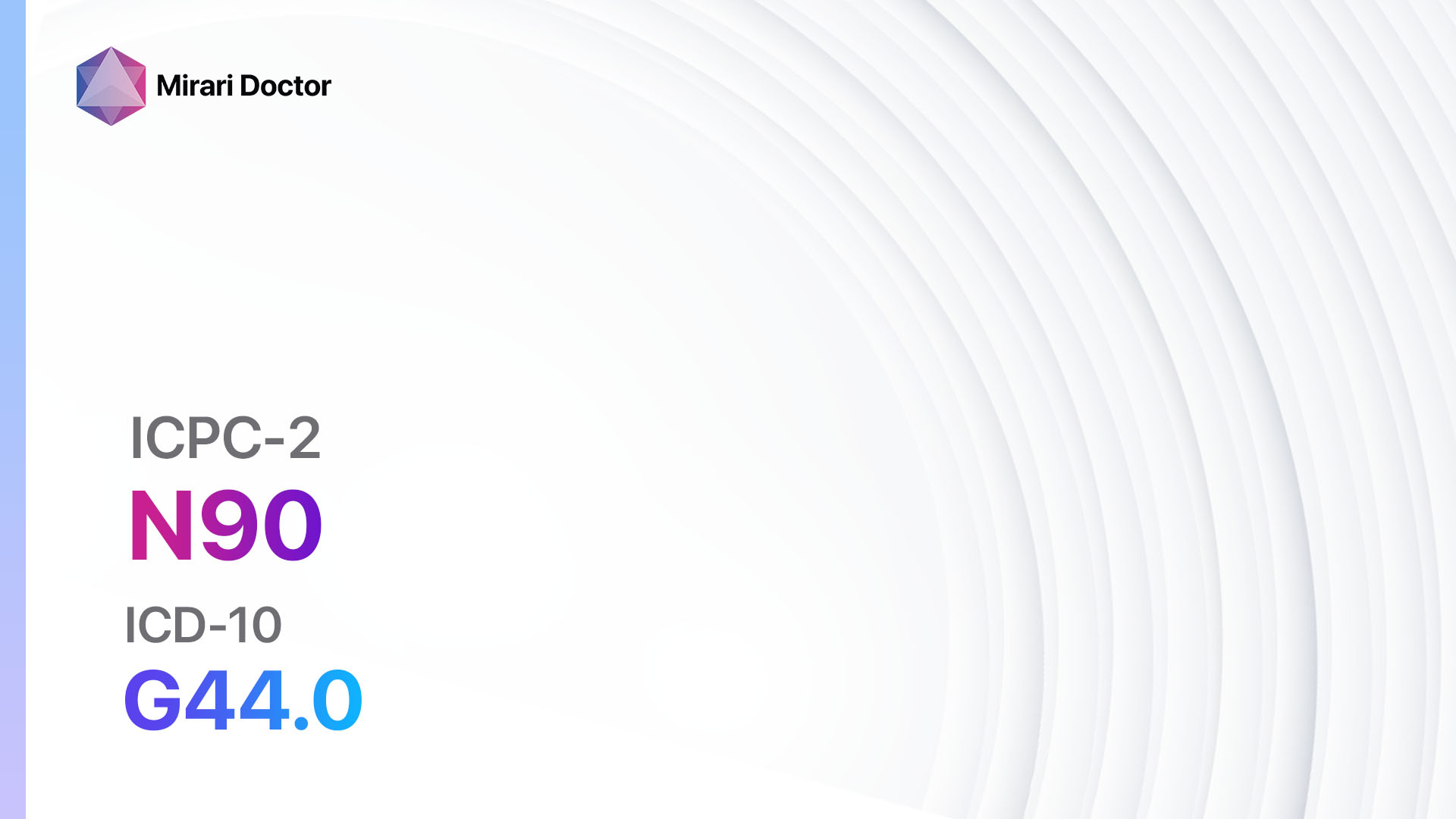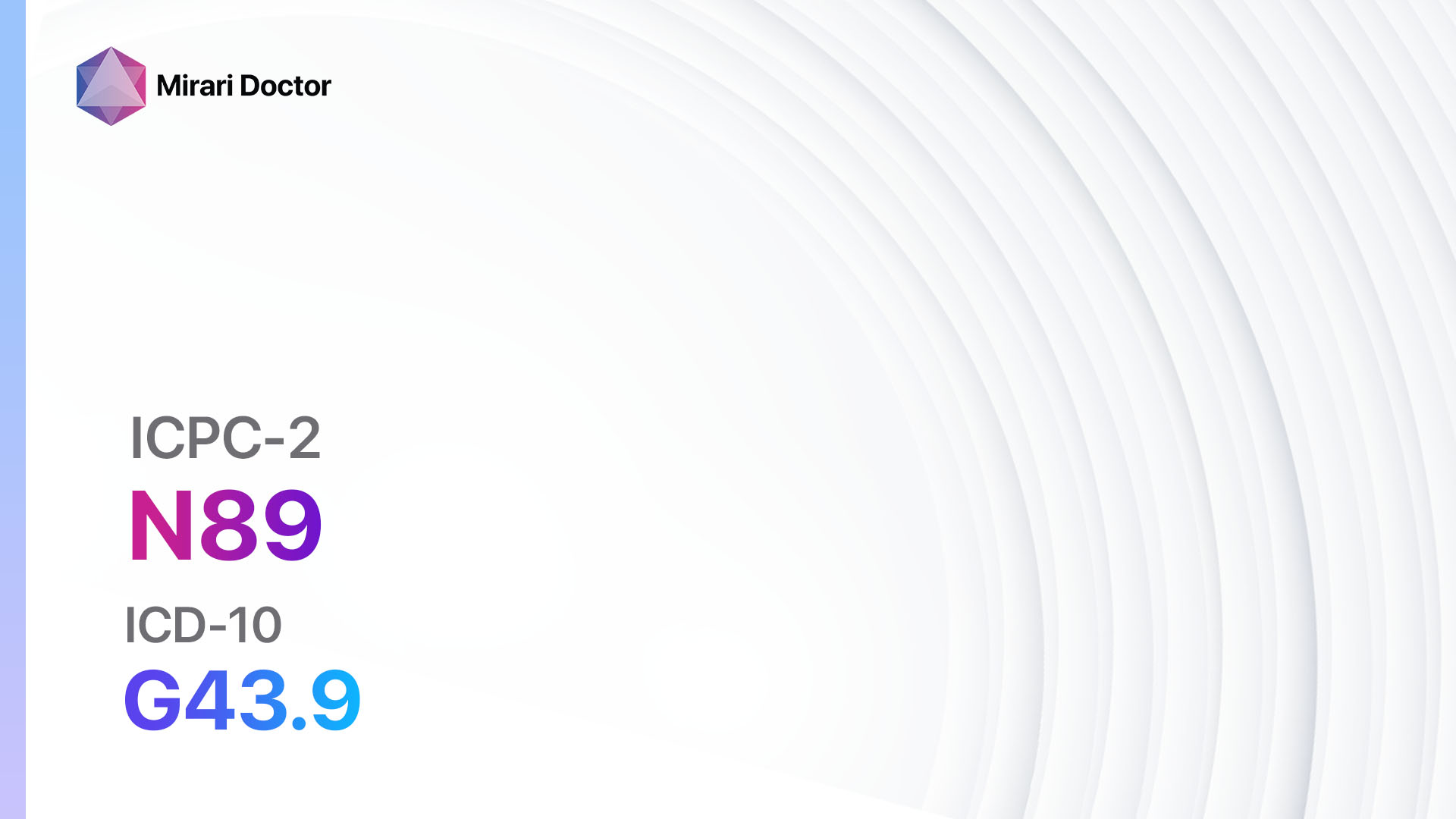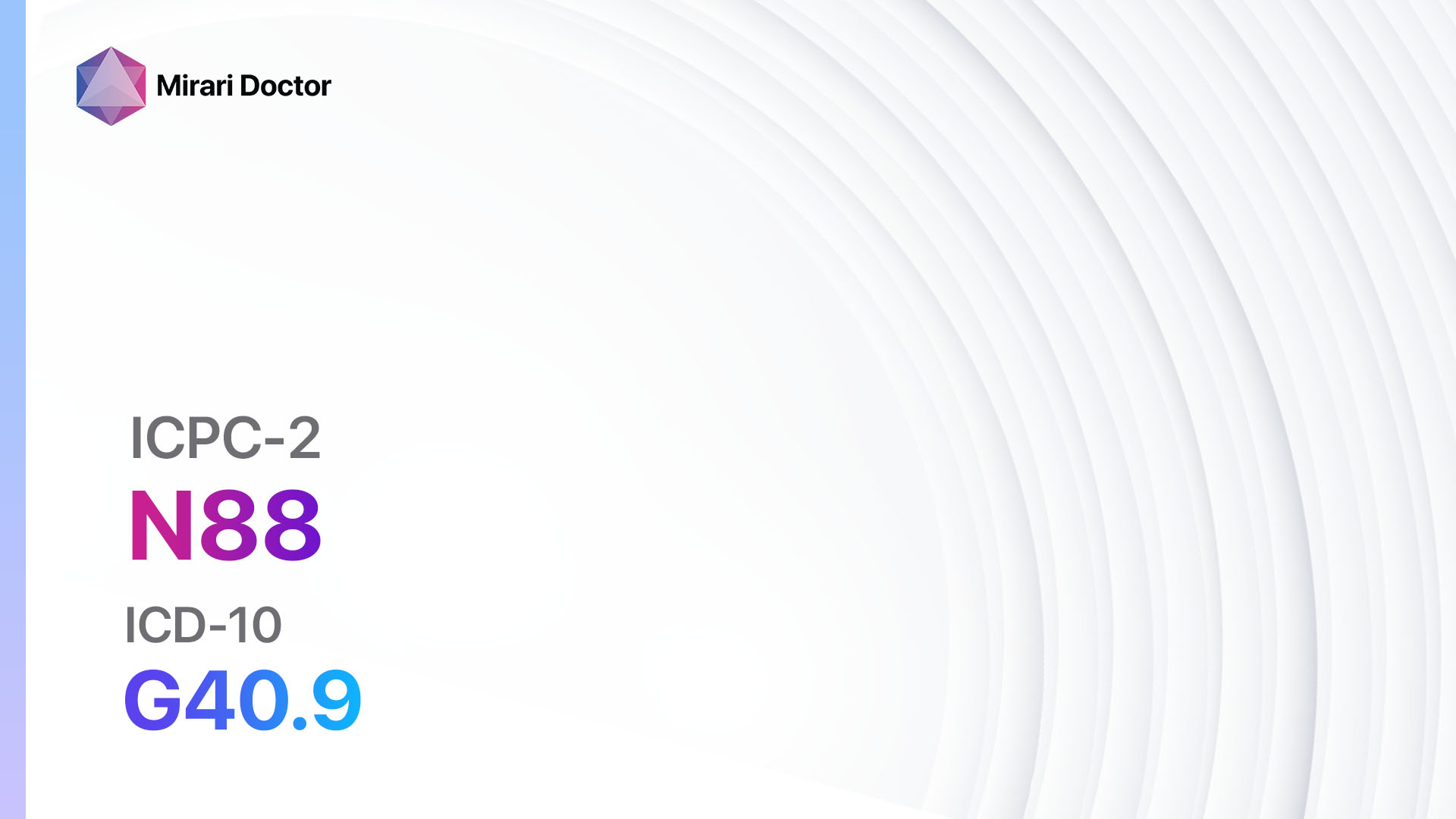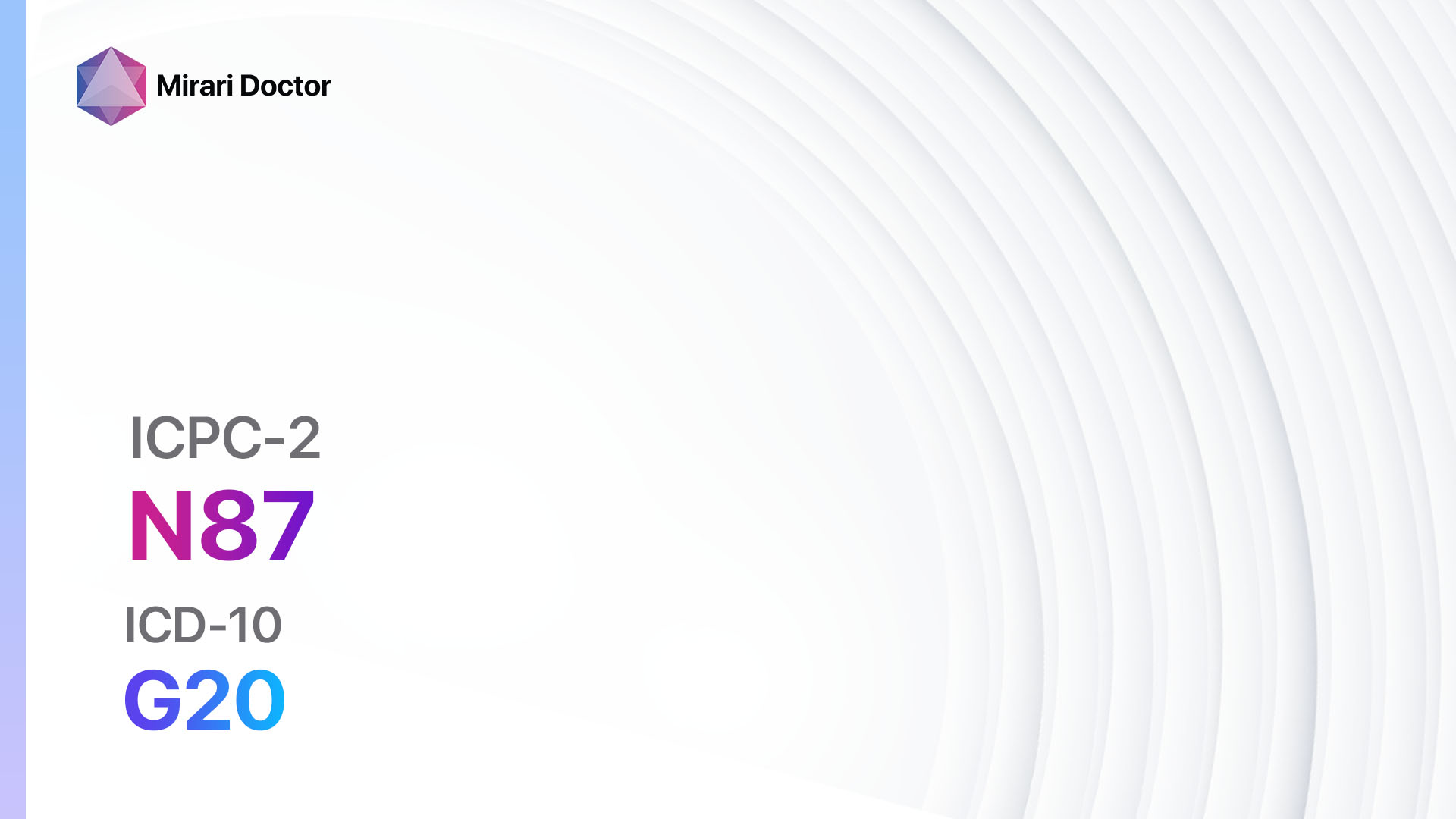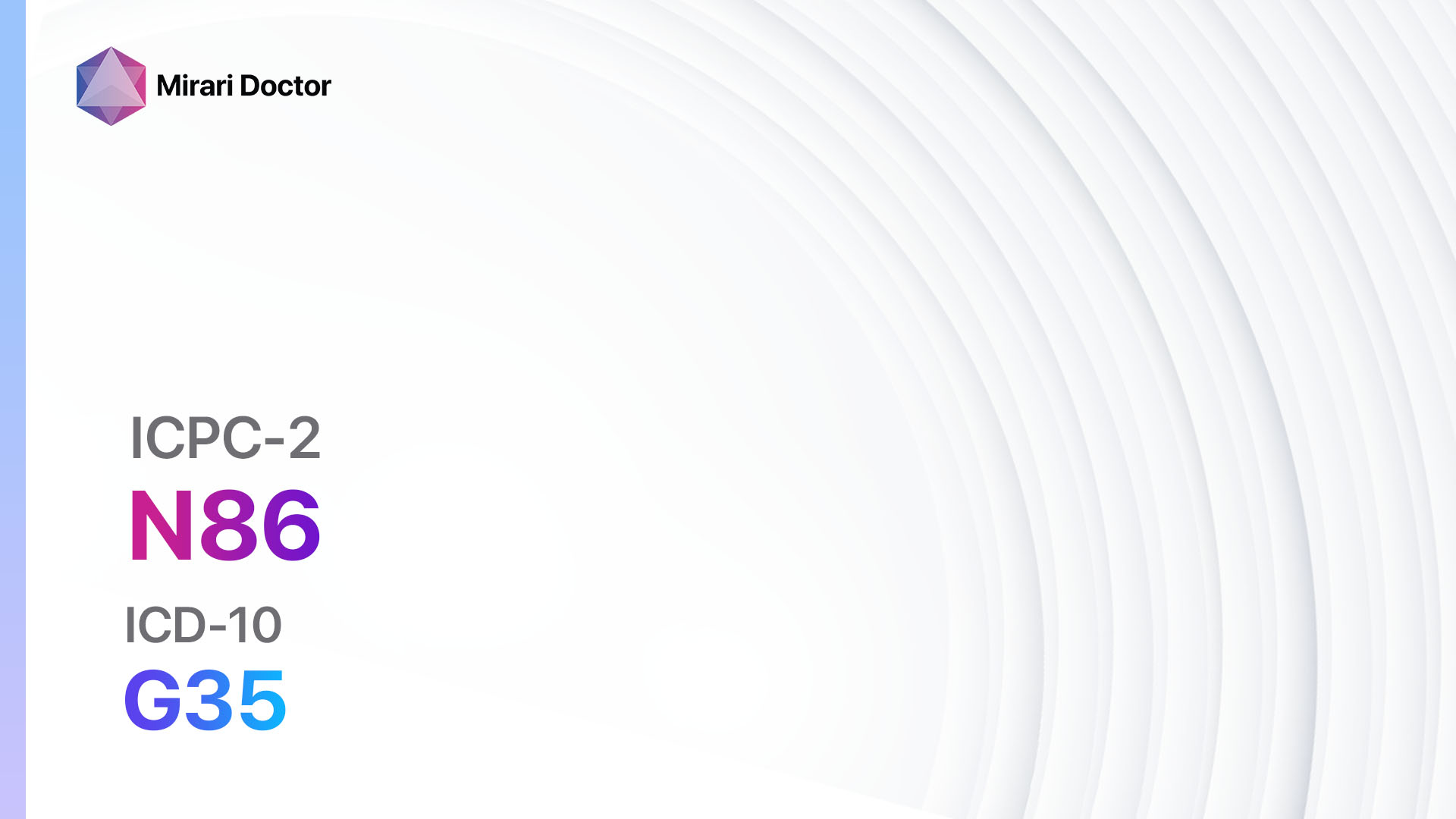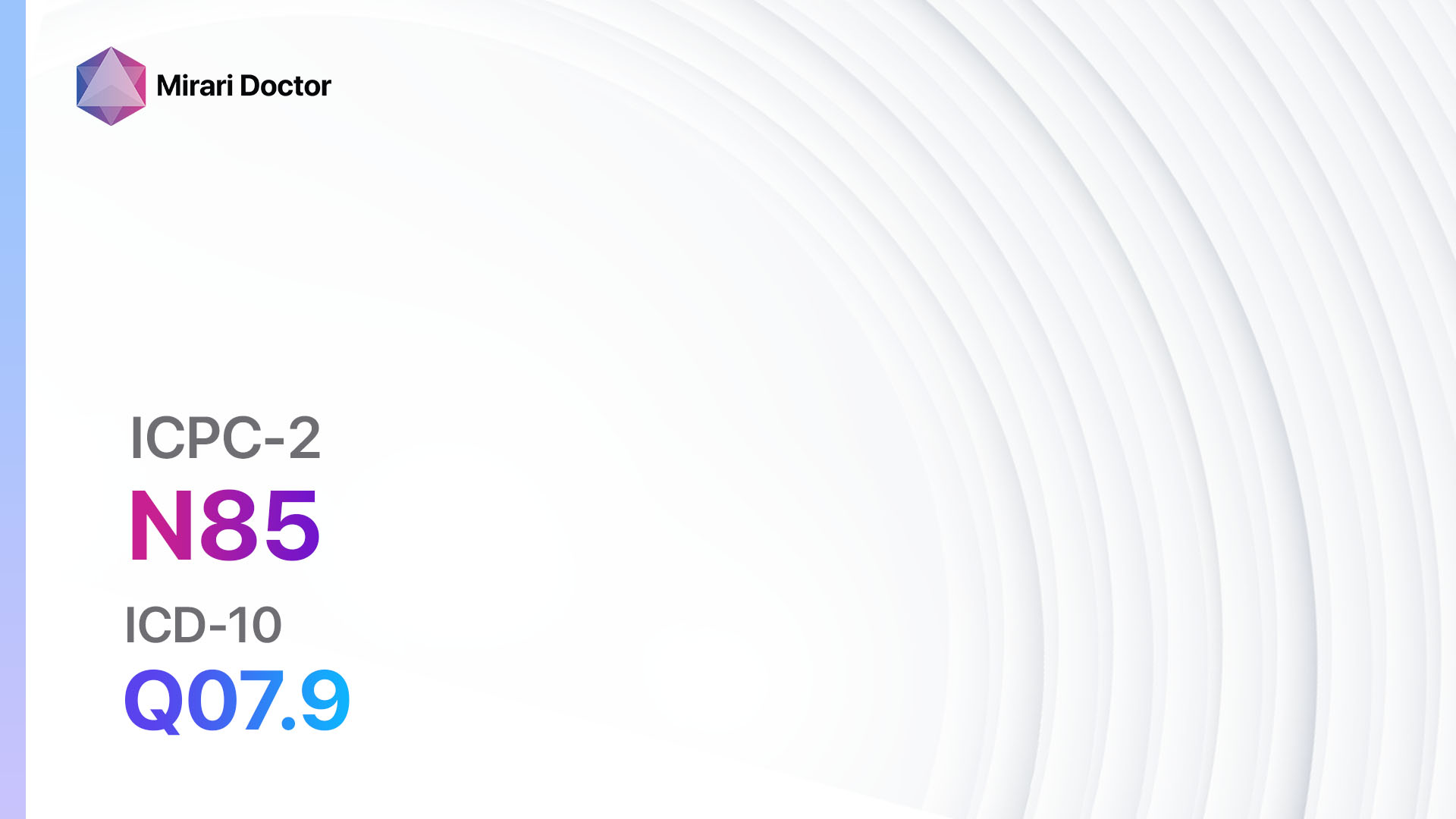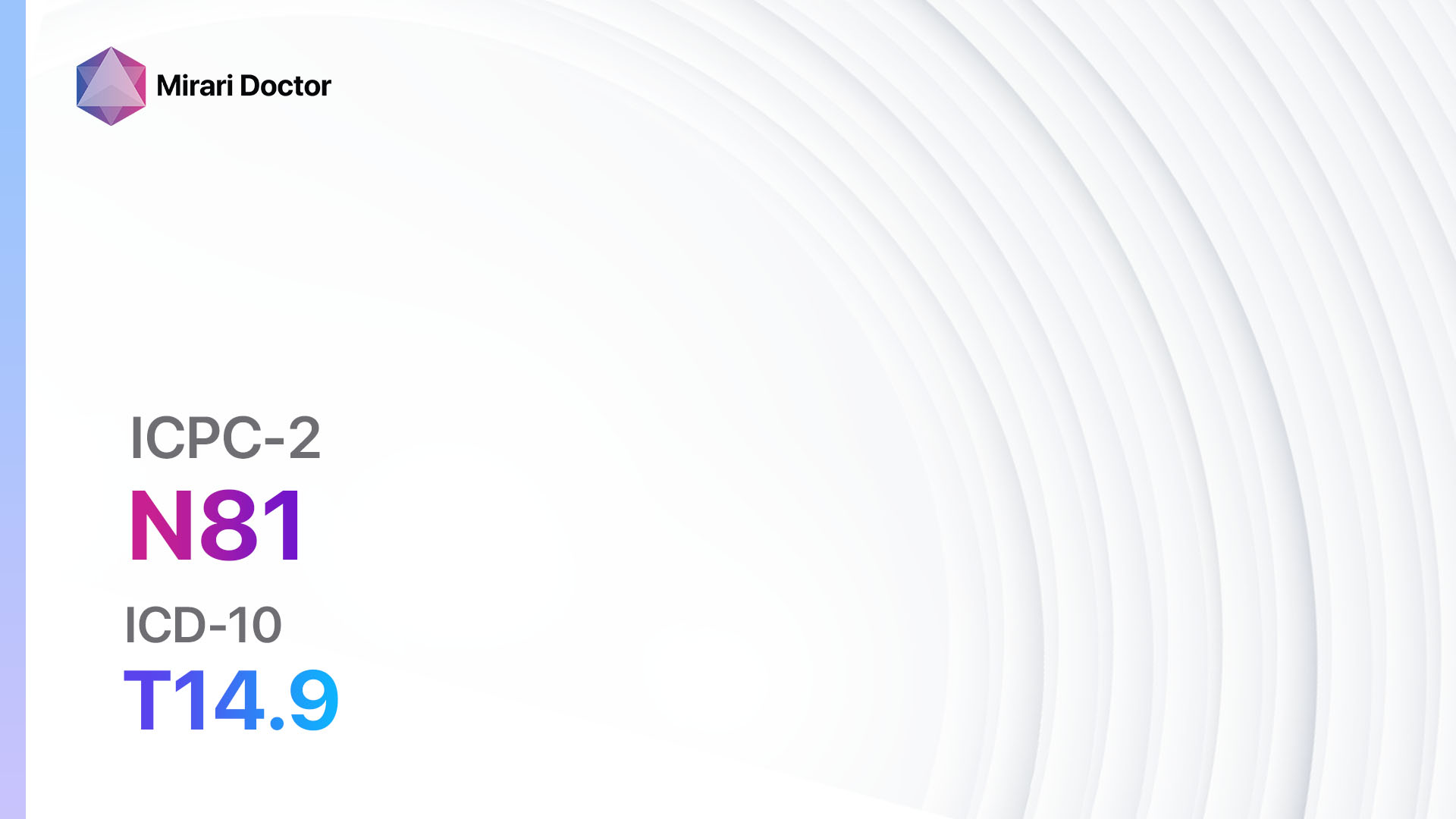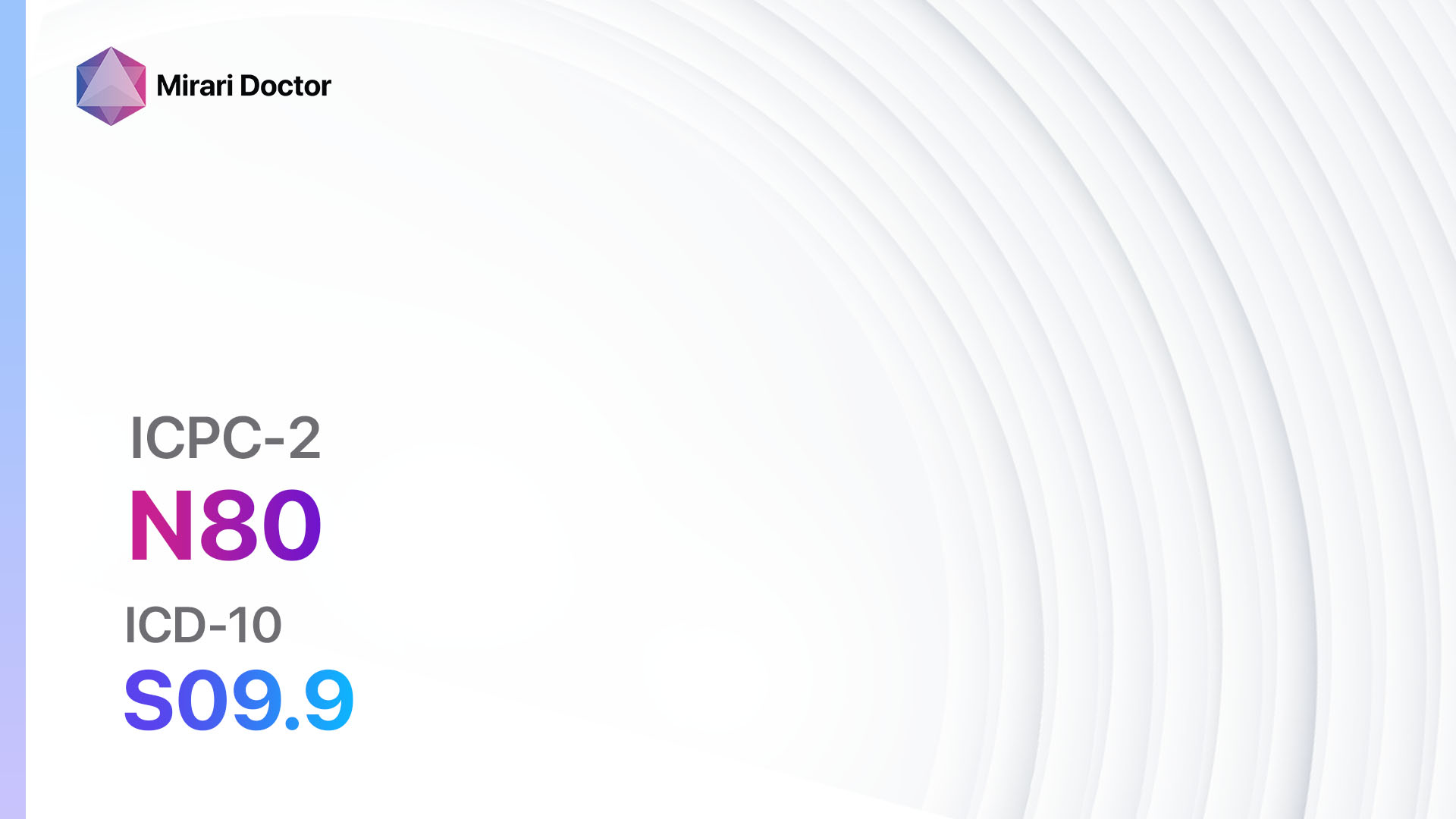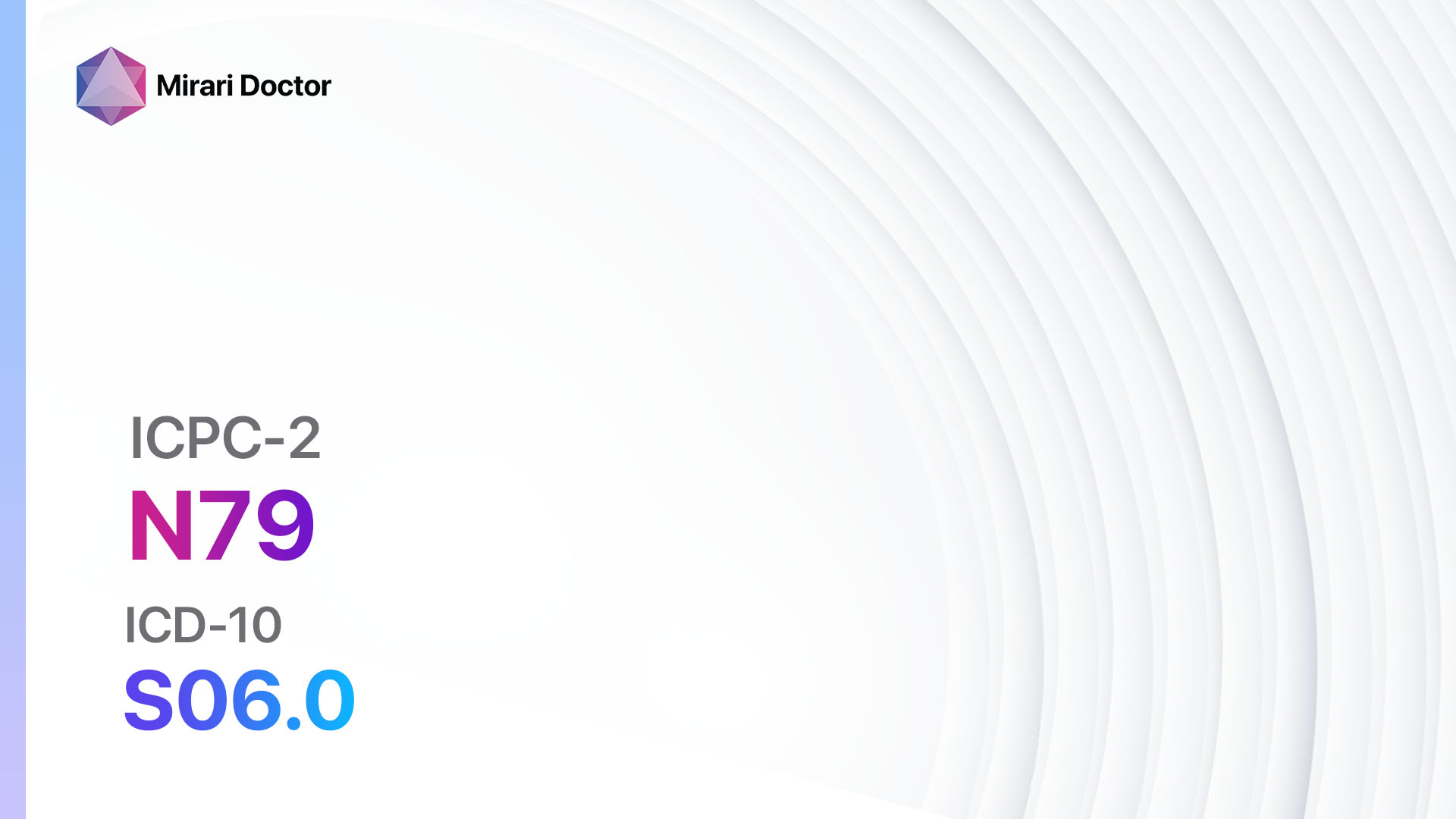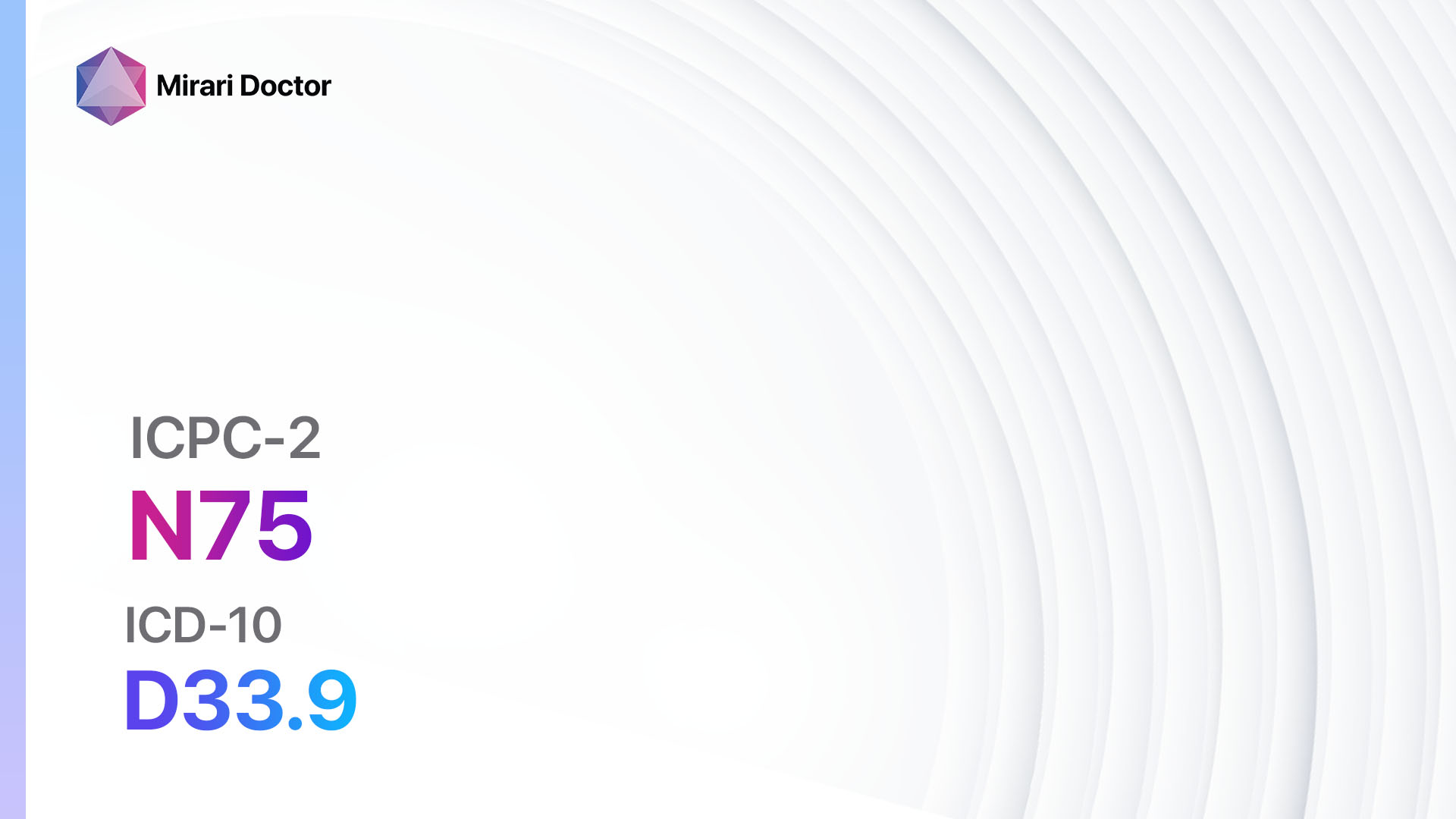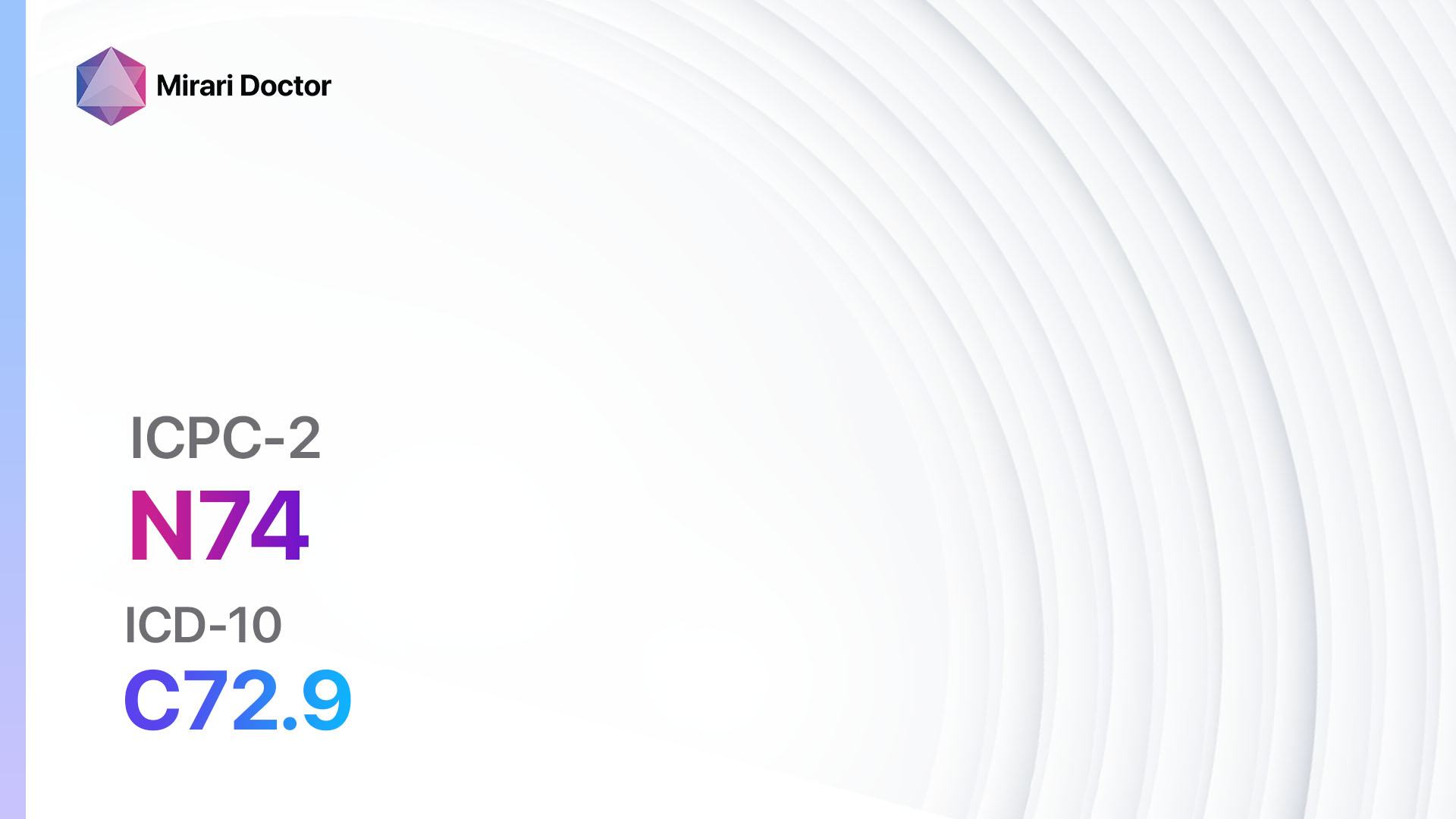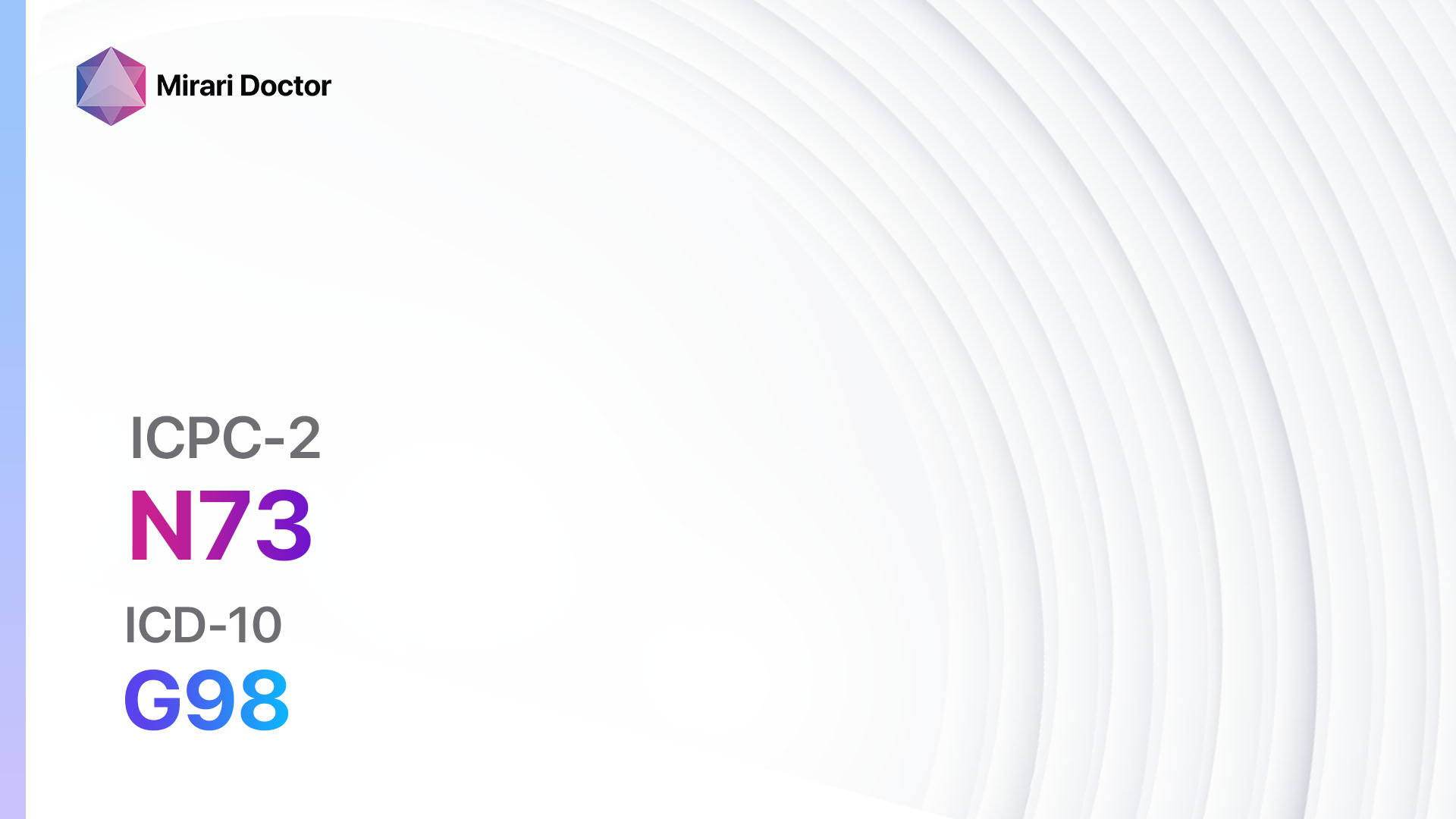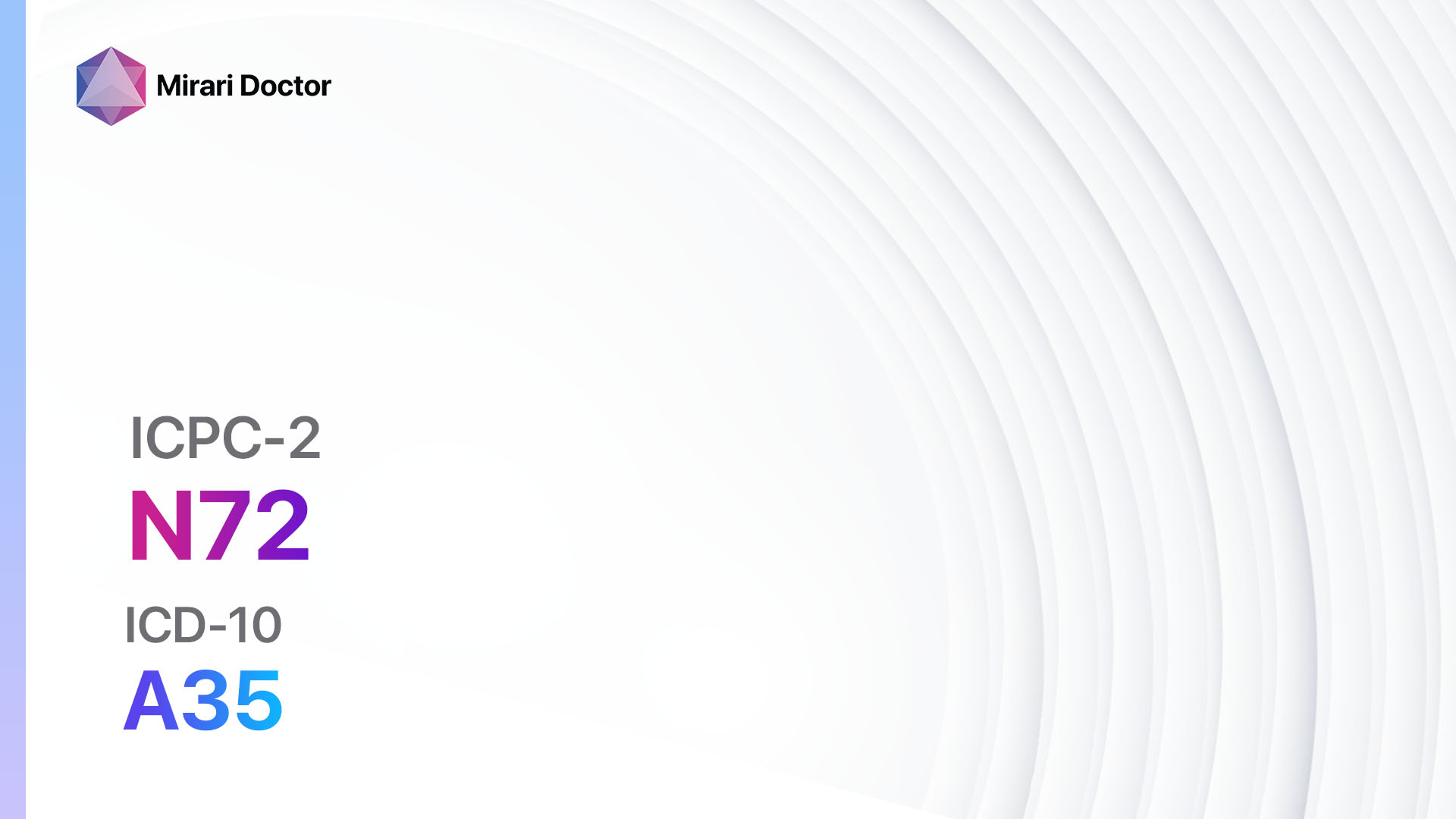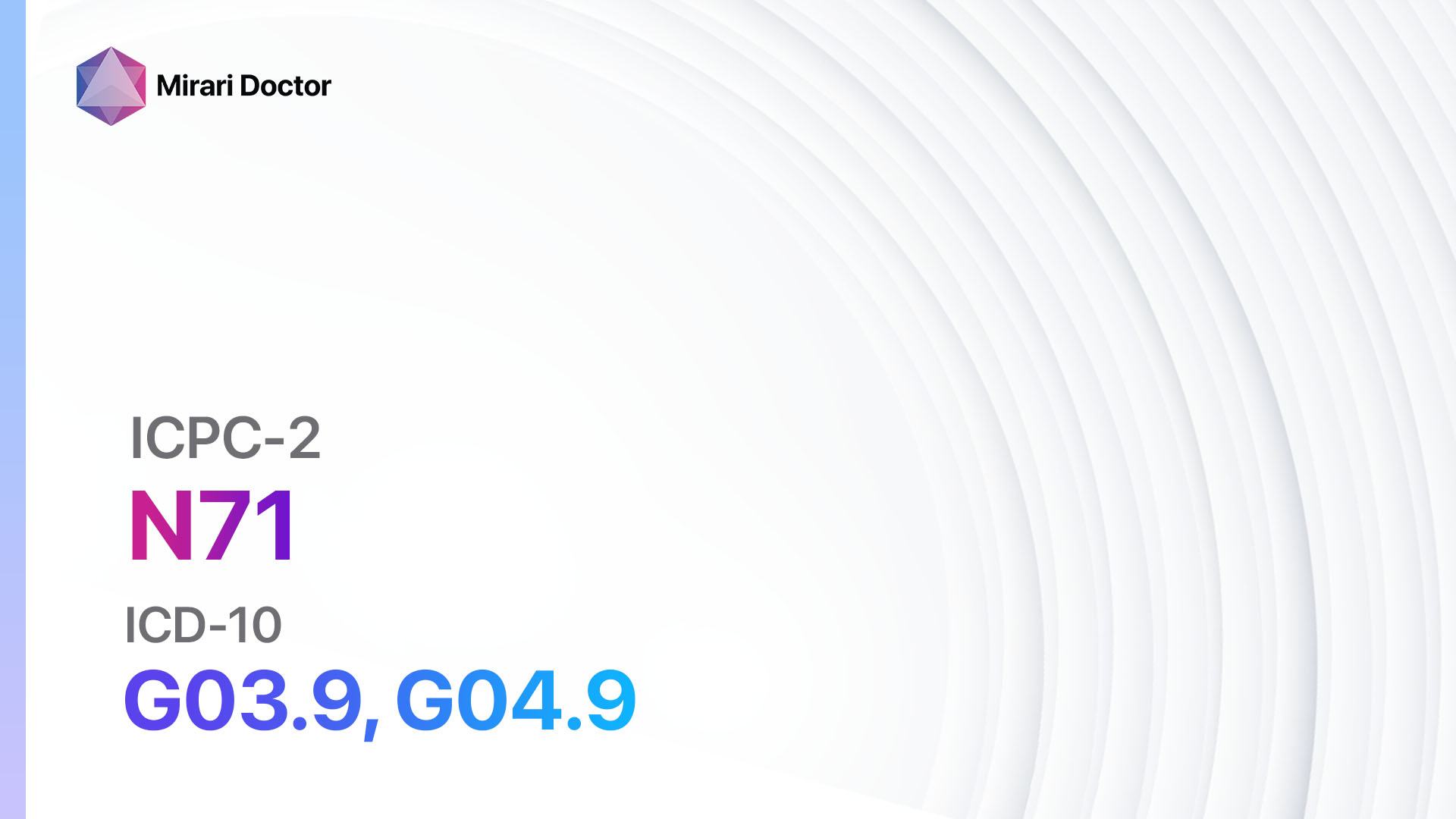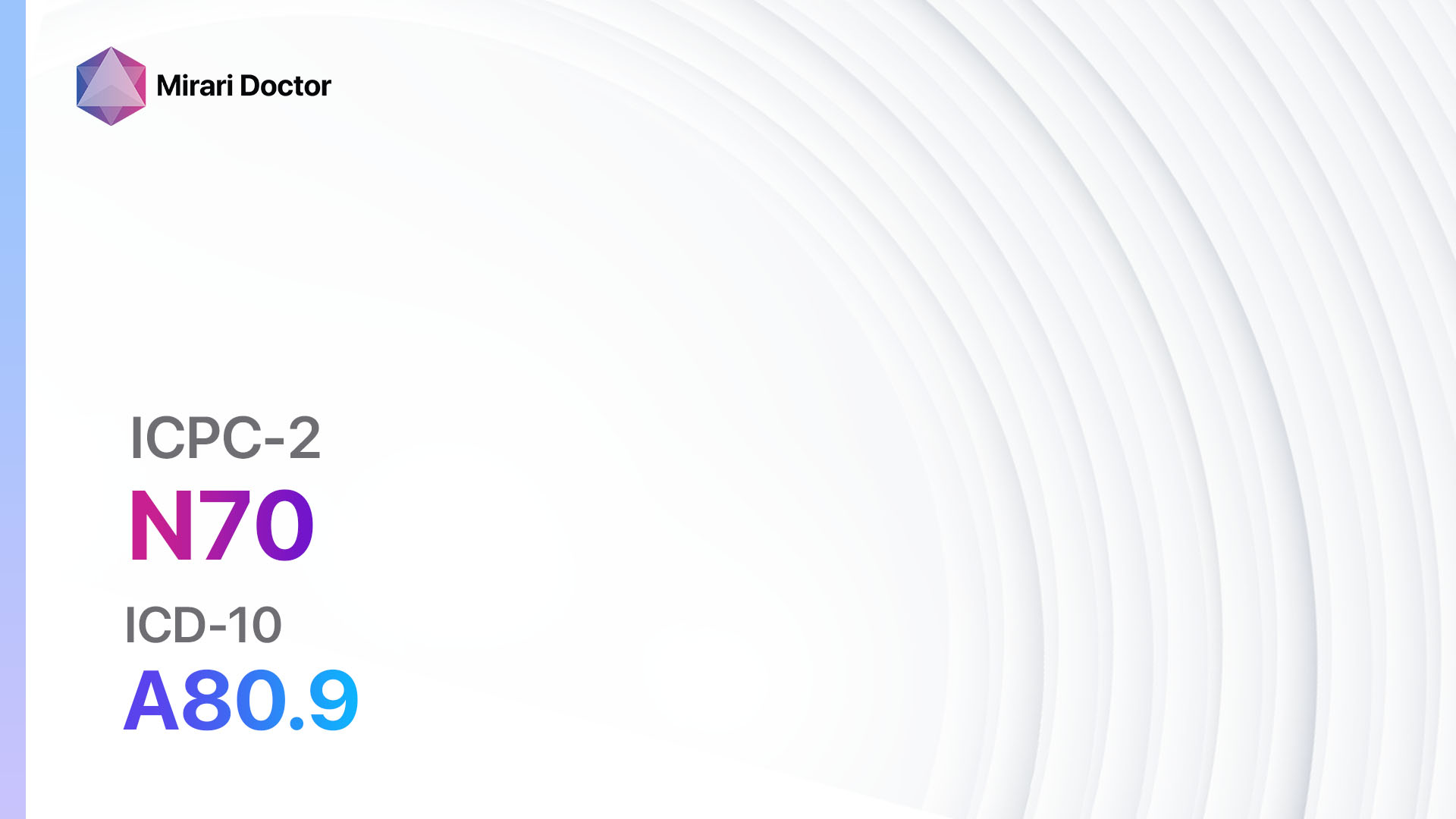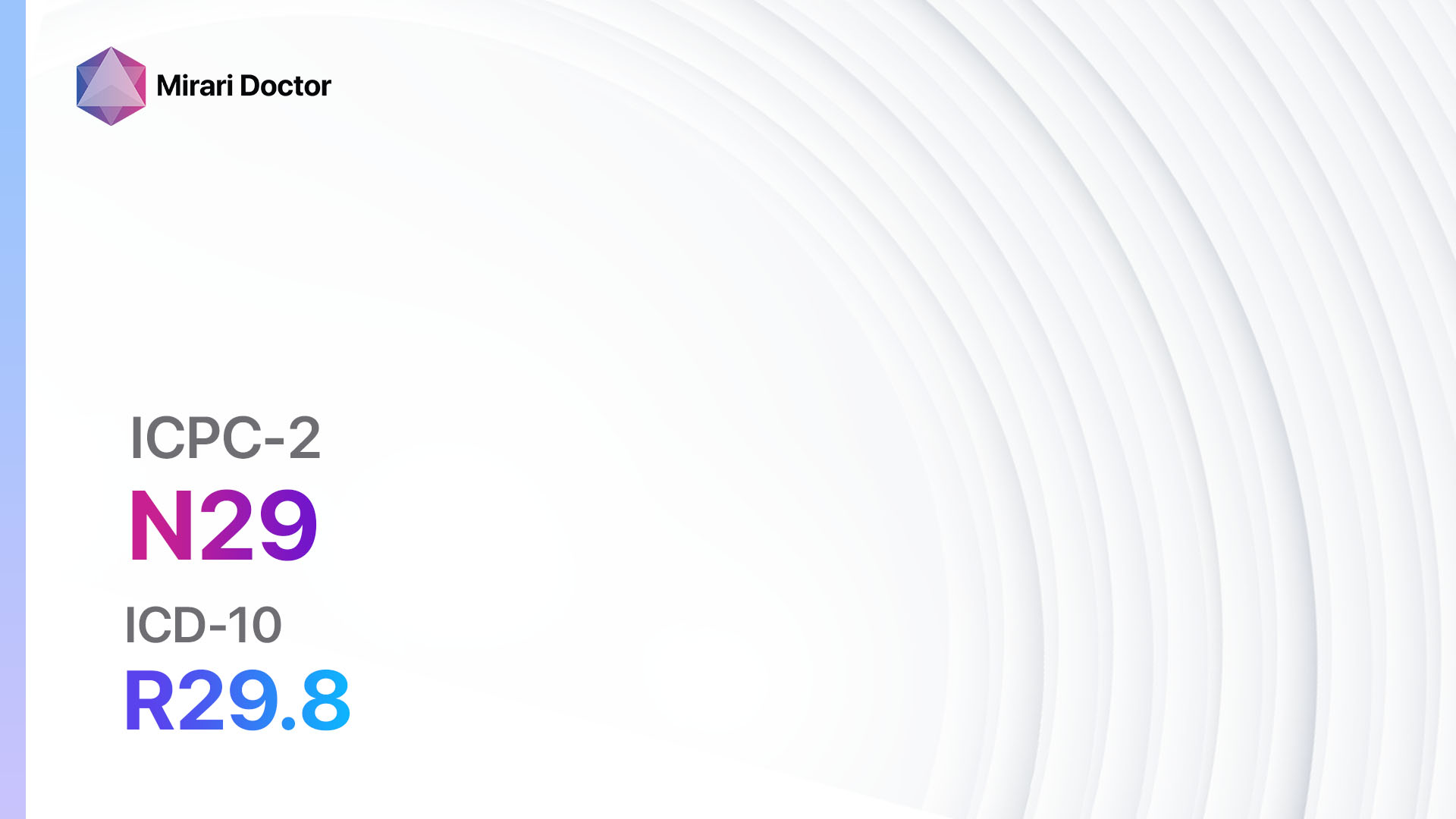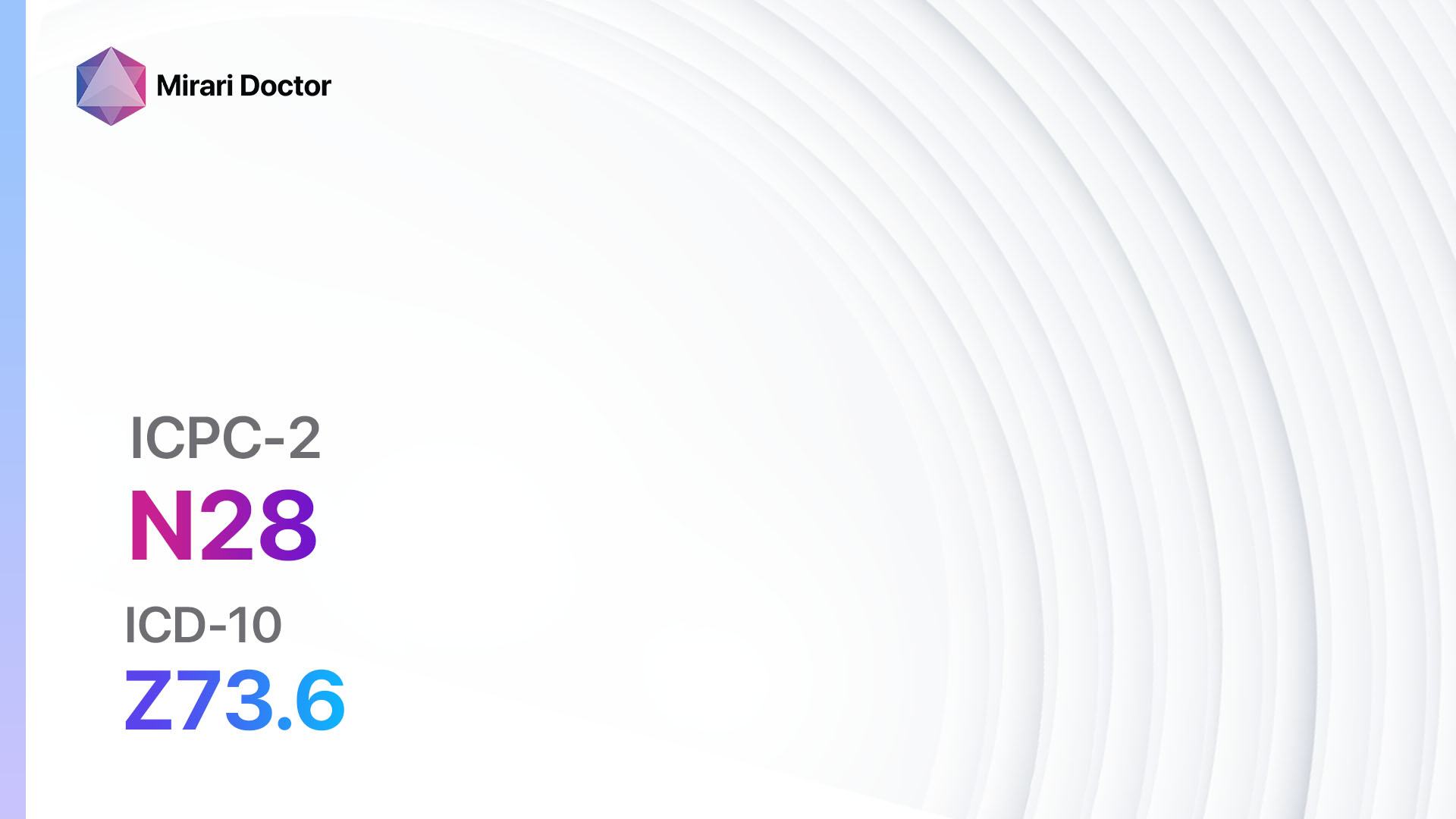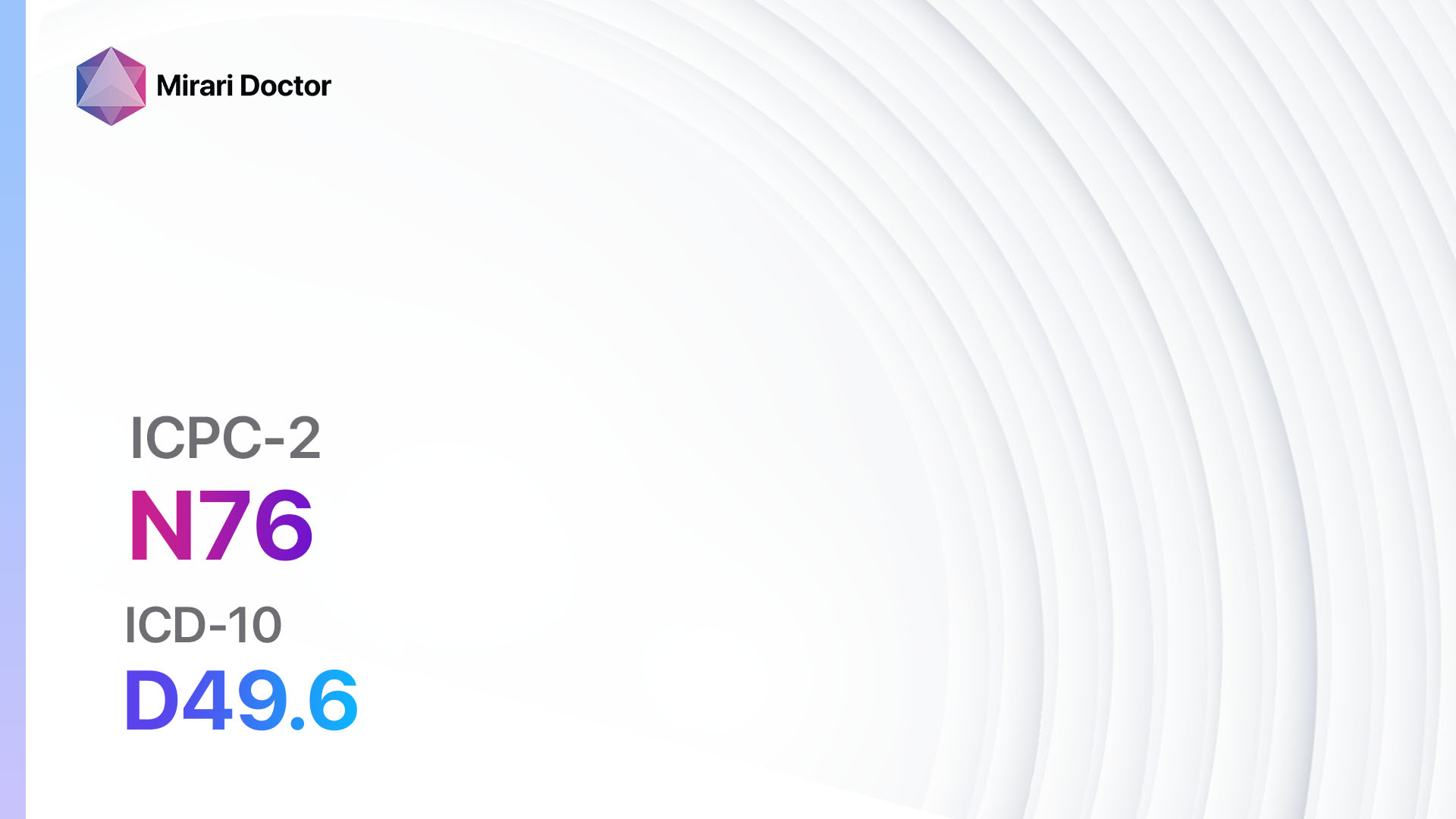
Introduction
Neoplasm of the nervous system refers to the abnormal growth of cells in the brain or spinal cord. This condition is significant as it can lead to various neurological symptoms and potentially life-threatening complications. The aim of this guide is to provide a comprehensive overview of the diagnostic steps, possible interventions, and patient education for neoplasm of the nervous system.
Codes
- ICPC-2 Code: N76 Neoplasm nervous system unspec.
- ICD-10 Code: D49.6 Neoplasm of unspecified behaviour of brain
Symptoms
- Headaches: Persistent or worsening headaches, especially in the morning.[1]
- Seizures: Recurrent seizures that may vary in severity and frequency.[2]
- Neurological deficits: Weakness, numbness, or changes in coordination.
- Cognitive changes: Memory problems, confusion, or personality changes.
- Vision or hearing problems: Blurred vision, double vision, or hearing loss.
- Balance and coordination issues: Difficulty walking or maintaining balance.
- Nausea and vomiting: Especially in the morning or with changes in position.
- Fatigue: Persistent tiredness or lack of energy.
- Changes in appetite or weight: Unexplained weight loss or gain.
- Sleep disturbances: Insomnia or excessive sleepiness.[3]
Causes
- Genetic factors: Certain genetic mutations can increase the risk of developing neoplasms of the nervous system.[4]
- Environmental factors: Exposure to ionizing radiation or certain chemicals may contribute to the development of these tumors.
- Family history: Having a close relative with a history of neoplasms of the nervous system can increase the risk.
- Age: The incidence of these tumors tends to increase with age.
- Gender: Some types of neoplasms of the nervous system are more common in males.
- Immune system disorders: Certain conditions that weaken the immune system may increase the risk.[5]
Diagnostic Steps
Medical History
- Gather information about the patient’s symptoms, including their duration and progression.
- Identify any risk factors, such as family history or exposure to radiation.
- Assess the patient’s medical history, including any previous neurological conditions or treatments.
- Inquire about any recent changes in cognitive function, behavior, or physical abilities.[6]
Physical Examination
- Perform a thorough neurological examination to assess motor function, sensory function, reflexes, and coordination.
- Check for any signs of increased intracranial pressure, such as papilledema or abnormal eye movements.
- Evaluate the patient’s gait, balance, and coordination.
- Examine the head and neck for any abnormalities, such as enlarged lymph nodes or masses.[7]
Laboratory Tests
- Complete blood count (CBC): To assess for any abnormalities, such as anemia or infection.
- Liver function tests: To evaluate liver function, as some neoplasms of the nervous system can metastasize to the liver.
- Kidney function tests: To assess renal function, as certain treatments may affect kidney function.
- Tumor markers: Some neoplasms of the nervous system may produce specific tumor markers that can be detected in the blood.[8]
Diagnostic Imaging
- Magnetic resonance imaging (MRI): Provides detailed images of the brain and spinal cord to identify the location, size, and characteristics of the tumor.
- Computed tomography (CT) scan: Can be used to visualize the brain and spinal cord, particularly in emergency situations or when MRI is contraindicated.
- Positron emission tomography (PET) scan: Helps determine the metabolic activity of the tumor and identify any areas of metastasis.
- Angiography: Used to visualize the blood vessels in the brain and identify any abnormalities or areas of reduced blood flow.[9]
Other Tests
- Lumbar puncture: To analyze the cerebrospinal fluid for the presence of cancer cells or other abnormalities.
- Biopsy: In some cases, a tissue sample may be obtained for pathological analysis to confirm the diagnosis and determine the tumor type.
- Genetic testing: In certain cases, genetic testing may be recommended to identify specific mutations associated with neoplasms of the nervous system.[10]
Follow-up and Patient Education
- Provide the patient with a clear explanation of the diagnosis, including the type and stage of the tumor.
- Discuss the treatment options available and their potential benefits and risks.
- Address any concerns or questions the patient may have.
- Emphasize the importance of regular follow-up appointments and adherence to the recommended treatment plan.
- Provide resources and support for the patient and their family, such as counseling services or support groups.
Possible Interventions
Traditional Interventions
Medications:
Top 5 drugs for neoplasm of the nervous system:
- Temozolomide:
- Cost: $3,000-$5,000 per cycle.
- Contraindications: Hypersensitivity to temozolomide or its components.
- Side effects: Nausea, vomiting, fatigue, myelosuppression.
- Severe side effects: Bone marrow suppression, liver toxicity, opportunistic infections.
- Drug interactions: None reported.
- Warning: Regular blood tests required to monitor blood counts and liver function.
- Bevacizumab:
- Cost: $5,000-$10,000 per cycle.
- Contraindications: Hypersensitivity to bevacizumab or its components, uncontrolled hypertension.
- Side effects: Hypertension, proteinuria, bleeding.
- Severe side effects: Gastrointestinal perforation, arterial thromboembolic events.
- Drug interactions: None reported.
- Warning: Increased risk of bleeding and wound healing complications.
- Lomustine:
- Cost: $1,000-$2,000 per cycle.
- Contraindications: Bone marrow suppression, hypersensitivity to lomustine or its components.
- Side effects: Myelosuppression, nausea, vomiting.
- Severe side effects: Pulmonary toxicity, hepatotoxicity.
- Drug interactions: None reported.
- Warning: Regular blood tests required to monitor blood counts and liver function.
- Carmustine:
- Cost: $1,000-$2,000 per cycle.
- Contraindications: Hypersensitivity to carmustine or its components, bone marrow suppression.
- Side effects: Myelosuppression, nausea, vomiting.
- Severe side effects: Pulmonary toxicity, hepatotoxicity.
- Drug interactions: None reported.
- Warning: Regular blood tests required to monitor blood counts and liver function.
- Temozolomide + Radiation Therapy:
- Cost: $10,000-$20,000 per cycle.
- Contraindications: Hypersensitivity to temozolomide or its components, bone marrow suppression.
- Side effects: Nausea, vomiting, fatigue, myelosuppression.
- Severe side effects: Bone marrow suppression, liver toxicity, opportunistic infections.
- Drug interactions: None reported.
- Warning: Regular blood tests required to monitor blood counts and liver function.
Alternative Drugs:
- Procarbazine: Can be used in combination with other chemotherapy agents.
- Cisplatin: May be used in certain cases of neoplasms of the nervous system.
- Vincristine: Can be used in combination with other chemotherapy agents.
- Etoposide: May be used in certain cases of neoplasms of the nervous system.
- Cytarabine: Can be used in combination with other chemotherapy agents.
Surgical Procedures:
- Craniotomy: Surgical removal of the tumor from the brain.
- Cost: $50,000-$100,000.
- Spinal cord tumor resection: Surgical removal of the tumor from the spinal cord.
- Cost: $30,000-$70,000.
- Stereotactic radiosurgery: High-dose radiation therapy delivered precisely to the tumor.
- Cost: $20,000-$50,000.
- Shunt placement: Placement of a shunt to drain excess cerebrospinal fluid caused by the tumor.
- Cost: $10,000-$30,000.
- Ventriculoperitoneal shunt placement: Placement of a shunt to drain excess cerebrospinal fluid from the brain to the abdomen.
- Cost: $20,000-$40,000.
Alternative Interventions
- Acupuncture: May help alleviate symptoms such as pain and nausea.
- Cost: $60-$120 per session.
- Herbal supplements: Some herbal supplements, such as turmeric or green tea extract, may have potential anti-cancer properties.
- Cost: Varies depending on the specific supplement.
- Mind-body techniques: Practices such as meditation, yoga, or tai chi may help reduce stress and improve overall well-being.
- Cost: Varies depending on the specific practice and location.
- Dietary modifications: Following a healthy diet rich in fruits, vegetables, and whole grains may support overall health and well-being.
- Cost: Varies depending on individual food choices.
- Exercise therapy: Regular physical activity can help improve strength, endurance, and overall quality of life.
- Cost: Varies depending on the specific program or facility.
Lifestyle Interventions
- Stress management: Engaging in stress-reducing activities, such as mindfulness or relaxation techniques, can help improve overall well-being.
- Cost: Varies depending on the specific practice or program.
- Sleep hygiene: Establishing a regular sleep routine and creating a conducive sleep environment can improve sleep quality.
- Cost: Varies depending on individual preferences and needs.
- Smoking cessation: Quitting smoking can improve overall health and reduce the risk of complications.
- Cost: Varies depending on the chosen smoking cessation method.
- Healthy diet: Following a balanced diet rich in fruits, vegetables, whole grains, and lean proteins can support overall health.
- Cost: Varies depending on individual food choices.
- Regular exercise: Engaging in regular physical activity, such as walking, swimming, or cycling, can improve cardiovascular health and overall well-being.
- Cost: Varies depending on individual preferences and access to exercise facilities.
It is important to note that the cost ranges provided are approximate and may vary depending on the location and availability of the interventions. It is recommended to consult with healthcare professionals for personalized treatment options and cost estimates.
Mirari Cold Plasma Alternative Intervention
Understanding Mirari Cold Plasma
- Safe and Non-Invasive Treatment:Mirari Cold Plasma is a safe and non-invasive treatment option for various skin conditions. It does not require incisions, minimizing the risk of scarring, bleeding, or tissue damage.
- Efficient Extraction of Foreign Bodies:Mirari Cold Plasma facilitates the removal of foreign bodies from the skin by degrading and dissociating organic matter, allowing easier access and extraction.
- Pain Reduction and Comfort:Mirari Cold Plasma has a local analgesic effect, providing pain relief during the treatment, making it more comfortable for the patient.
- Reduced Risk of Infection:Mirari Cold Plasma has antimicrobial properties, effectively killing bacteria and reducing the risk of infection.
- Accelerated Healing and Minimal Scarring: Mirari Cold Plasma stimulates wound healing and tissue regeneration, reducing healing time and minimizing the formation of scars.
Mirari Cold Plasma Prescription
Video instructions for using Mirari Cold Plasma Device – N76 Neoplasm nervous system unspec. (ICD-10:D49.6)
| Mild | Moderate | Severe |
| Mode setting: 1 (Infection) Location: 0 (Localized) Morning: 15 minutes, Evening: 15 minutes | Mode setting: 1 (Infection) Location: 0 (Localized) Morning: 30 minutes, Lunch: 30 minutes, Evening: 30 minutes | Mode setting: 1 (Infection) Location: 0 (Localized) Morning: 30 minutes, Lunch: 30 minutes, Evening: 30 minutes |
| Mode setting: 2 (Wound Healing) Location: 0 (Localized) Morning: 15 minutes, Evening: 15 minutes | Mode setting: 2 (Wound Healing) Location: 0 (Localized) Morning: 30 minutes, Lunch: 30 minutes, Evening: 30 minutes | Mode setting: 2 (Wound Healing) Location: 0 (Localized) Morning: 30 minutes, Lunch: 30 minutes, Evening: 30 minutes |
| Mode setting: 3 (Antiviral Therapy) Location: 0 (Localized) Morning: 15 minutes, Evening: 15 minutes | Mode setting: 3 (Antiviral Therapy) Location: 0 (Localized) Morning: 30 minutes, Lunch: 30 minutes, Evening: 30 minutes | Mode setting: 3 (Antiviral Therapy) Location: 0 (Localized) Morning: 30 minutes, Lunch: 30 minutes, Evening: 30 minutes |
| Mode setting:7 (Immunotherapy) Location:1 (Sacrum) Morning: 15 minutes, Evening: 15 minutes | Mode setting:7 (Immunotherapy) Location:1 (Sacrum) Morning: 30 minutes, Lunch: 30 minutes, Evening: 30 minutes | Mode setting:7 (Immunotherapy) Location:1 (Sacrum) Morning: 30 minutes, Lunch: 30 minutes, Evening: 30 minutes |
| Total Morning:60minutesapprox.$10USD, Evening:60minutesapprox.$10USD | Total Morning:120minutesapprox.$20USD, Lunch:120minutesapprox. $20 USD, Evening:120minutesapprox. $20 USD, | Total Morning:120minutesapprox.$20USD, Lunch:120minutesapprox. $20 USD, Evening:120minutesapprox. $20 USD, |
| Usualtreatmentfor7-60daysapprox.$140USD–$1200USD | Usualtreatmentfor6-8weeksapprox.$2,520USD–$3,360USD | Usualtreatmentfor3-6monthsapprox.$5,400USD–$10,800USD |
 |
|
Use the Mirari Cold Plasma device to treat Neoplasm nervous system unspec. effectively.
WARNING: MIRARI COLD PLASMA IS DESIGNED FOR THE HUMAN BODY WITHOUT ANY ARTIFICIAL OR THIRD PARTY PRODUCTS. USE OF OTHER PRODUCTS IN COMBINATION WITH MIRARI COLD PLASMA MAY CAUSE UNPREDICTABLE EFFECTS, HARM OR INJURY. PLEASE CONSULT A MEDICAL PROFESSIONAL BEFORE COMBINING ANY OTHER PRODUCTS WITH USE OF MIRARI.
Step 1: Cleanse the Skin
- Start by cleaning the affected area of the skin with a gentle cleanser or mild soap and water. Gently pat the area dry with a clean towel.
Step 2: Prepare the Mirari Cold Plasma device
- Ensure that the Mirari Cold Plasma device is fully charged or has fresh batteries as per the manufacturer’s instructions. Make sure the device is clean and in good working condition.
- Switch on the Mirari device using the power button or by following the specific instructions provided with the device.
- Some Mirari devices may have adjustable settings for intensity or treatment duration. Follow the manufacturer’s instructions to select the appropriate settings based on your needs and the recommended guidelines.
Step 3: Apply the Device
- Place the Mirari device in direct contact with the affected area of the skin. Gently glide or hold the device over the skin surface, ensuring even coverage of the area experiencing.
- Slowly move the Mirari device in a circular motion or follow a specific pattern as indicated in the user manual. This helps ensure thorough treatment coverage.
Step 4: Monitor and Assess:
- Keep track of your progress and evaluate the effectiveness of the Mirari device in managing your Neoplasm nervous system unspec.. If you have any concerns or notice any adverse reactions, consult with your health care professional.
Note
This guide is for informational purposes only and should not replace the advice of a medical professional. Always consult with your healthcare provider or a qualified medical professional for personal advice, diagnosis, or treatment. Do not solely rely on the information presented here for decisions about your health. Use of this information is at your own risk. The authors of this guide, nor any associated entities or platforms, are not responsible for any potential adverse effects or outcomes based on the content.
Mirari Cold Plasma System Disclaimer
- Purpose: The Mirari Cold Plasma System is a Class 2 medical device designed for use by trained healthcare professionals. It is registered for use in Thailand and Vietnam. It is not intended for use outside of these locations.
- Informational Use: The content and information provided with the device are for educational and informational purposes only. They are not a substitute for professional medical advice or care.
- Variable Outcomes: While the device is approved for specific uses, individual outcomes can differ. We do not assert or guarantee specific medical outcomes.
- Consultation: Prior to utilizing the device or making decisions based on its content, it is essential to consult with a Certified Mirari Tele-Therapist and your medical healthcare provider regarding specific protocols.
- Liability: By using this device, users are acknowledging and accepting all potential risks. Neither the manufacturer nor the distributor will be held accountable for any adverse reactions, injuries, or damages stemming from its use.
- Geographical Availability: This device has received approval for designated purposes by the Thai and Vietnam FDA. As of now, outside of Thailand and Vietnam, the Mirari Cold Plasma System is not available for purchase or use.
References
- Buckner JC, et al. Central nervous system tumors. Mayo Clin Proc. 2007;82(10):1271-1286.
- Wen PY, Kesari S. Malignant gliomas in adults. N Engl J Med. 2008;359(5):492-507.
- Armstrong TS, et al. Symptom clusters in patients with high-grade glioma. J Neurosci Nurs. 2006;38(6):369-376.
- Ostrom QT, et al. The epidemiology of glioma in adults: a “state of the science” review. Neuro Oncol. 2014;16(7):896-913.
- Wrensch M, et al. Epidemiology of primary brain tumors: current concepts and review of the literature. Neuro Oncol. 2002;4(4):278-299.
- Omuro A, DeAngelis LM. Glioblastoma and other malignant gliomas: a clinical review. JAMA. 2013;310(17):1842-1850.
- Forsyth PA, Posner JB. Headaches in patients with brain tumors: a study of 111 patients. Neurology. 1993;43(9):1678-1683.
- Weller M, et al. EANO guideline for the diagnosis and treatment of anaplastic gliomas and glioblastoma. Lancet Oncol. 2014;15(9):e395-e403.
- Pope WB, Brandal G. Conventional and advanced magnetic resonance imaging in patients with high-grade glioma. Q J Nucl Med Mol Imaging. 2018;62(3):239-253.
- Louis DN, et al. The 2016 World Health Organization Classification of Tumors of the Central Nervous System: a summary. Acta Neuropathol. 2016;131(6):803-820.
Related articles
Made in USA


